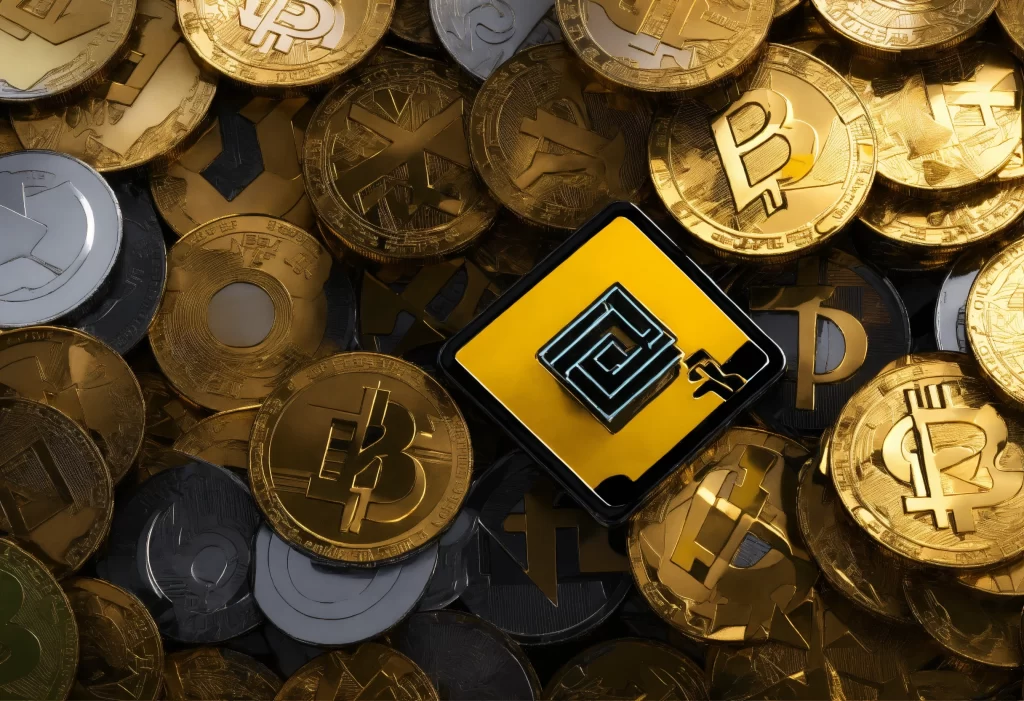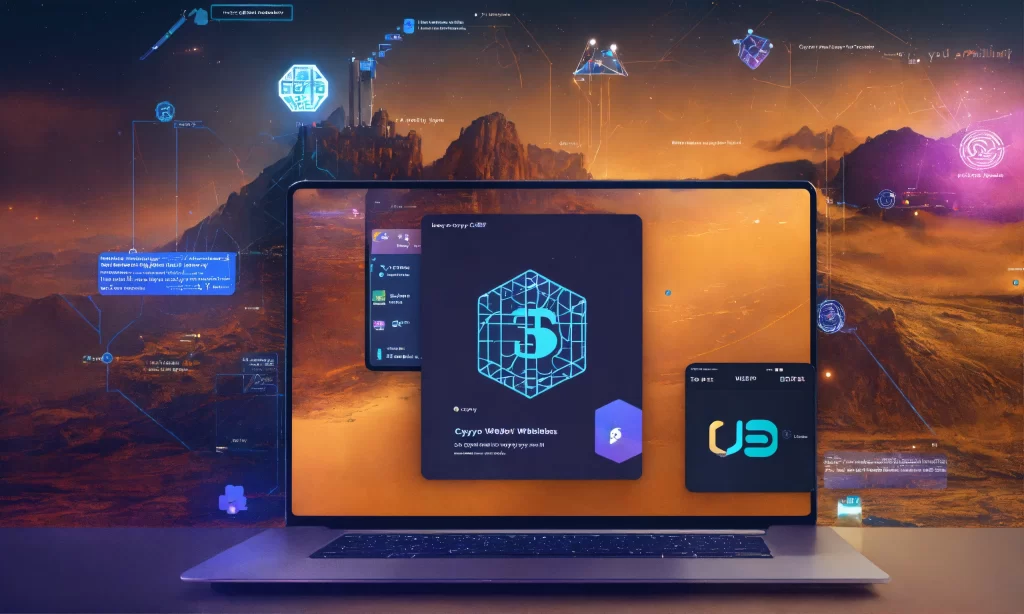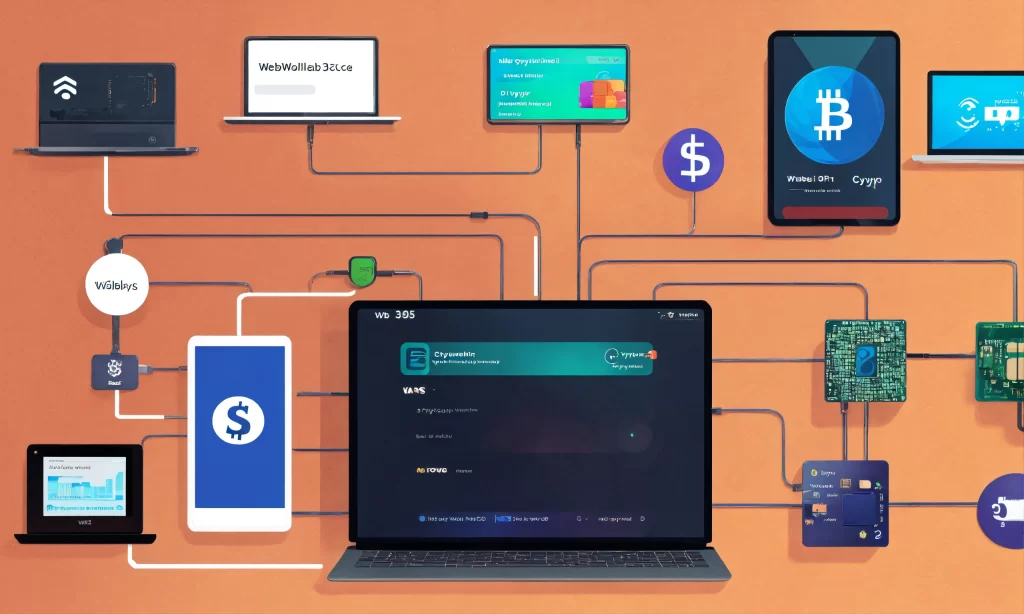Understanding Cryptocurrency Basics
A. What is crypto currency ?
Crypto can be described as an electronic as well as a virtual form of currency that utilizes technology referred to as a blockchain. As for tender, cryptos are not launched by the governments (fiat currencies) that issue tender with the help of banks or other organizations.

However, they base there operations on faculty of cryptographic algorithms for secure execution of transactions as well as the control of emission of new units.
The use of cryptocurrency started with the launch of Bitcoin in 2009 by an unknown character or a group of characters under the pseudonym ‘Satoshi Nakamoto’. That move was followed by others, to see thousands of cryptocurrencies flooding the market and none are alike; all of them have their characteristics and functions.
Key characteristics of cryptocurrencies
Some Key Points of cryptocurrencies

- Decentralization: Hence, it is for no single entity to control the currency.
- Digital: Was available only in electronic media
- Pseudonymous: Rather than linking transactions to users, it is linked to cryptographic keys that at this stage are connected to public blockchains.
- Transparent: Each and every single transaction is publicly recorded
- Immutable: Once more, the entries made here cannot be altered or undone, something that is not the same with manual accounting system.
Another type of digital currency is categorized as the Cryptocurrencies, which has users for a few years and where Bitcoin is one of the most frequent and the most valuable of the kind. Other such major cryptocurrencies are called ‘altcoins’; some of them include Ethereum, Ripple, Lite coin among others.
B. Cryptocurrencies in Detail
Some of the advantages that it has over traditional finance are still very strong in the ever increasing the trend and popularity of cryptocurrencies. Let’s explore some of the key benefits. Now it might be useful to look at some of the potential advantages:

1. Decentralization and autonomy
- At the moment there is no state that governs cryptocurrencies.
- Quite as importantly, the usage of the funds is fully in the hands of the users.
- This is because there is less likelihood that the government shall interfere of manipulate the operations of the corporation.
2. Security and privacy
- Probabilities make certain that the transactions which take place will be secure and sound via cryptographic methods.
- Post has pseudonyms because this is enough to preserve a certain level of anonymity or own ersatz names.
- More resistant to being fraud and identity theft than the Financial Institutions and System Integration Models.
3. Lower transaction fees
- The removal of intermediate leads to the cut on the expenses.
- Most advantageous in International Business operations
4. Fast and borderless transactions
- Transfers can occur in a matter of minutes without a regard for geographical location of the parties involved
- No fixed geographical location or banking hours.
5. Accessibility
- All it takes is the use of an internet connection to join the site.
- Financial services targeted for the under-banked individuals
6. Transparency
- Every single dealing is incorporated into a public register of records.
- Increases transparency: accountability and fraud decreases
7. Potential for high returns
- Writing helps them because VGI can be volatile and thus might lead to a high increase in the price of the product.
- Potential of expansion in the area of investment choices
8. Programmability
- Smart contracts are fully automated and self-executing contract theories.
- Helps in the design of decentralized applications commonly referred to as DApps.
9. Inflation resistance
- Most of the existing cryptocurrencies include features, which curb the issue of inflation.
- Shines in comparison to fiat currencies that may be affected by the inflation due to the actions and decisions of the central bank.
10. Financial inclusion
- Essentially targeted toward helping unbanked he and underbanked individuals get access to financial services.
- Allows being active in the global economy while lacking classic banking facilities
Here’s a comparison of cryptocurrencies with traditional financial systems
| Feature | Crypto currencies | Traditional Financial Systems |
| Control | Decentralized | Centralized |
| Transaction Speed | Minutes | Days (especially for international transfers) |
| Accessibility | 24/7 global access | Limited by banking hours and geographical locations |
| Privacy | Pseudonymous | Linked to real-world identities |
| Fees | Generally lower | Often higher, especially for international transfers |
| Programmability | Smart contracts and DApps | Limited programmability |
| Inflation Risk | Often deflationary or controlled inflation | Subject to central bank policies |
| Regulatory Oversight | Limited or evolving regulations | Heavily regulated |
However, regarding cryptocurrencies, it is crucial to mention some of the disadvantages that the proposed means can have – they are associated with high volatility and uncertain legal regulation; apart from that, it is possible to encounter scams and hacker attacks. Like with all the other investments, it is important to seek and acquire proper information regarding the potential risks that are associated with investing in, or using, cryptocurrencies
C. Role of Block chain technology
Cryptocurrencies interact with the blockchain platform it was built on since it is the fundamental system without which they can neither exist nor operate.

These concepts are very central to the understanding of the functional aspects of bitcoins and the reasons as to why they are viewed as disruptive in the financial industry.
What is blockchain ?
Blockchain is decentralized, digital record book that notes every event in the computer network.

It is termed a ‘chain’ because it is made of links, and each link is a ‘block’ holding a number of transactions. These are blocks that within them contain some transactions, and once a particular block is incorporated in the chain, it cannot be changed again, meaning that once a transaction is made, it cannot be undone.
Key features of blockchain technology

1. Decentralization
- It may be noted that no organization or person owns the network.
- Data is stored in a distributed manner and or can be defined as located in diverse computers or nodes.
2. Transparency
- All these transactions are transparent to the members of the backbone participants.
- Enhances trust and accountability
3. Immutability
- Data once recorded cannot be changed or erased Unlike in the case of manual recording where data can be amended, erased or edited.
- Assures the validity of concerns the transaction history
4. Security
- To secure transactions, its uses cryptographic algorithms.
- Tamper proof and fraud proof
5. Consensus mechanisms
- Synchronizes the general understanding of the ledger within the network
- Some of the mechanism are evidence of Work (PoW) and evidence of Stake (PoS).
How block chain enables cryptocurrencies

1. Transaction validation
- Blockchain authenticates and archives all the crypto cash transactions
- Does away with the requirement of having a single MacGuffin that controls and coordinates transactions.
2. Prevention of double-spending
- Prevents double spending of the specific digital currency
- Quite important for the sustainment of the most important components of the cryptocurrency system.
3. Creation of new coins
- Some of the popular cryptocurrencies thus make use of blockchain in controlling the issuance of their coins.
- Example: Mining happens at the center of the framework, and includes the era of unused bitcoins as an motivation to affirm the exchanges.
4. Smart contracts
- Smart or autonomous contracts that contain provisions coded directly into the code of the contract
- It empowers users to conduct pseudonymously and automatically innovative peer-to-peer transactions and contracts and build decentralized applications (DApps).
5. Tokenization
- Enables one to be able to develop other forms of wealth in the digital platform of the economy.
- Enables people to invest in smaller portions and innovative ways
Beyond cryptocurrencies: Other applications of blockchain
In addition to cryptocurrency, many possible etiologies are existent with the blockchain technology that has applications beyond the financial domain. Some other use cases include:

1. Supply chain management
- Managing products from the point of production to the consumer.
- Building greater transparency and minimizing fraud The transparency of funds should be improved while fraud cases should be minimized, because the use of funds should be clear and transparent to the public, especially the government and other interested parties.
2. Healthcare
- Protection of medical records and their availability for use
- Enhancing the level of integration of care organizations
3. Voting systems
- The prevention of electoral fraud and other related vices
- As a way of mitigating on the probability of having voter fraud, the following are some of the measures that could be taken;
4. Identity management
- Building safe, distributed digital personae
- Minimizing cases of identity theft and fraud
5. Real estate
- Streamlining property transactions
- It can also provide the platform for shared ownership of properties particularly the fractions.
6. Intellectual property
- Guards and preserves the rights of portable digital documents
- Dispute of an equitable remuneration and reward for creators
7. Energy sector
- Enabling peer-to-peer energy trading
- Optimizing grid management
8. Government services
- Increasing openness in archived documents
- Streamlining bureaucratic processes
9. Education
- Verifying academic credentials
- Managing lifelong learning records
10. Charity and non-profit organizations:
- Ensuring transparent fund allocation
- Observing of the degree of reach by the donations
Blockchain in cryptocurrencies is about its application in providing secure and decentralized environment of storing and transferring data and assets that is capable of bringing change to virtually any industry. It is therefore safe to assume that as developments in the realm of blockchain go on, people will invent new ways through which characteristics of blockchain can be utilized.
D. Functions of digital currencies
Learn more about how digital currencies will operate it is important to look at the following aspects:

An insight into the processes involved in performing a cryptocurrency transaction, the concept of wallets, and the process of mining. Each of these aspects may be described in detail as follows:
1. Cryptocurrency Transactions
A advanced crypto exchange is the buying and offering of cryptocurrencies through which computerized assets are exchanged from one client to the other. Here’s a step-by-step breakdown of how a normal exchange works:

a. Initiation
Taking the case of a shareholders exchange, the sender starts the exchange by recognizing the beneficiary account number as well as the monetary exchange
b. Broadcasting
- The signed transaction is transmitted to the network of nodes, which actually are the other computers that have run the client of the cryptocurrency software.
c. Verification
- Nodes in the network verify the transaction by checking:
- It implies that, the sender has adequate capital at his or her disposal.
- The digital signature is genuine
- As is ordinary in this arrange, the exchange is done agreeing to the approach set.
d. Inclusion in a block
- Particular verified transactions are combined in a block.
- Block addition in the block chain requires miners to solve a tough mathematical problem to get to the solution.
e. Confirmation
- Once a block is added to the block chain then the transaction is said to have completed.
- More confirmations are arrived as blocks are added more and more and hence offers a higher level of security to the transaction.
f. Completion
- The amount of money received is deducted from the sender’s Wallet Balance and the sender’s number is noted against the same in the Till Register The recipient Wallet Balance is updated with the received amount.
2. Cryptocurrency Wallets
Cryptocurrency wallets can be defined as one of the most important utilities used when operating with digital currencies. As for their actual nature, they are not the currencies themselves, but the keys required to organize and control the respective currency.

Types of cryptocurrency wallets:
a. Hot Wallets (connected to the internet)
- Software wallets (Desktop, mobile and web)
- Exchange wallets
b. Cold Wallets (offline storage)
- Hardware wallets
- Paper wallets
Key components of a cryptocurrency wallet:
1. Public Key
- From it is generated from the use of the private key
- Employed to make the creation of the wallet address through which to receive funds.
- It doesn’t matter that the information can be shared with other people without harm.
2. Private Key
- A secret alphanumeric code
- Applied to confirm identity, seal transactions in relation to owning the funds.
- Must not be disclosed to any other party or to the public
3. Wallet Address
- A compressed and also encoded version of the public key
- Used as the place to which cryptocurrencies are received
3. Mining and Consensus Mechanisms
Mining is an activity of adding new transactions into blockchain and at the same time creating some additional coins. The function of this concept is of significant importance in the security aspects of the cryptocurrency system.

Steps in the mining process:
1. Transaction pooling:
- Incomplete transactions are stored in a memory pool commonly known as mempool
2. Block creation:
- For purposes of forming a new block, miners choose particular transactions from the mempool.
3. Proof of Work (PoW):
- The process is such that miners attempt to be the first to provide the solution to a specifically complex mathematical problem.
- The one who comprehends and meets the needs of the problem inserted in the longest chain receives the right to construct a new block to the chain.
4. Block validation:
- If substantial it is a portion of the unused piece in the chain and is sent to the proprietors of the full adaptation of the chain.
- If valid it is a part of the new block in the chain and is sent to the owners of the full version of the chain.
5. Reward distribution:
- It is the miner that solves the problem that receives the new created coins and also a fee for the transactions.
Alternative consensus mechanisms:
Proof of Work (PoW) is the most well-known contract mechanism, used by Bitcoin and many other cryptocurrencies, there are different methods.

1. Proof of Stake (PoS):
- A blockchain is produced by a set of validators that get picked based upon the amount of the cryptocurrency that they own and which they are willing to ‘support’.
- More energy-efficient than PoW
- Used by Ethereum 2. 0, Cardano, and others
2. Delegated Proof of Stake (DPoS):
- Token holders select so-called “delegates,” who, in turn, are charged with the responsibility of the transaction, of entering new details in the new blocks.
- The objective of the current project is to raise the velocity of transactions and to reduce centralization.
3. Proof of Authority (PoA):
- In other words they are chosen on the premise of their personality and in the sense they are sound.
- This is mainly applicable in private or consortium block chains.
4. Proof of History (PoH)
- Affords coming up with a proof that an event that was said to have happened at a given time actually did, during that time it was purported to.
- When used in combination with other consensus mechanisms such as the one being used in Solana
Here’s a comparison of different consensus mechanisms:
| Consensus Mechanism | Energy Efficiency | Scalability | Decentralization | Examples |
| Proof of Work (PoW) | Low | Low | High | Bitcoin, Litecoin |
| Proof of Stake (PoS) | High | Medium | Medium | Ethereum 2.0, Cardano |
| Delegated Proof of Stake (DPoS) | High | High | Medium | EOS, Tron |
| Proof of Authority (PoA) | High | High | Low | VeChain, POA Network |
| Proof of History (PoH) | High | Very High | Medium | Solana |
4. The Role of Nodes
Nodes refer to computers whereby each of them runs the cryptocurrency software then they connect to the network. They are also most important in ensuring the as aforementioned decentralize of the cryptocurrencies.

Types of nodes
1. Full Nodes:
- Store the entire blockchain
- Validate transactions and blocks
- Relay the transactions and blocks occurring in your node to the other nodes out there.
2. Light Nodes:
- Store only block headers
- Count on full nodes for having the totality of transactions verified
- Ideal for enabling devices with low Stor-space or CPU power.
3. Mining Nodes:
- The nodes that contain the whole copy of the chain and that also include in it into the blocks that they mine.
- Contest to extend the chain of blocks within the blockchain
4. Functions of nodes:
- Maintain network consensus
- Verify transactions and blocks
- Transmit data on the network
- Preserve the confidentiality and non manipulability of the chain
5. Forks and Network Upgrades
Forks are modifications which take place to the digital currency and may lead to the formation of a brand new digital currency or an improvement to already existing ones.

Types of forks:
a) Soft Fork
- Backwards-compatible upgrade
- Old nodes can still fully verify transactions, but anything that the protocol has added since the node’s creation they will not be aware of
b) Hard Fork
- Non-backwards-compatible upgrade
- Rests a persistent split in the blockchain
- Can lead to formation of a new virtual currency (for Instance Bitcoin Cash spited from Bitcoin)
c) Reasons for forks
- Implementing new features
- Fixing security vulnerabilities
- Undoing of decisions (in the worst possible scenarios)
- That is, one finds philosophical differences within the community.
6. Interoperability and Cross-Chain Transactions
This is especially crucial as the ecosystem where cryptocurrencies exist is expanding and several blockchain networks need to connection with each other.

Interoperability solutions:
1. Atomic Swaps:
- Let individuals transact in cryptocurrencies with other individuals without the interference of a third party
2. Wrapped Tokens:
- Issue a new digital asset as a representation of an existing one on a different blockchain (For instance; WBTC on Ethereum)
3. Cross-Chain Bridges:
- Allow users to interchange their assets and data between various blockchains
- Interoperability Protocols:
- Custodial solutions that are intended to enable swaps between multiple blockchains (e. g. , Polkadot, Cosmos)
Benefits of interoperability
- High liquidation across the various cryptocurrencies
- Strengthening of cross chain smart contracts
- Enhanced scalability by making use of a number of blockchains

It is equally important for anyone intending to do business with cryptocurrencies, to learn how the digital currencies are created and how they function. The operations of digital cryptography and consensus, as well as the decentralized and digital nature of the networks, build an effective and progressive environment of financial services, which is still developing and has ownership to traditional form of money and fund transfers.
When we proceed further down the ‘rabbit hole’ of cryptocurrencies, it is essential to remember that although the technology that drives them is sophisticated and intricate, there are layers of interfaces and applications that make the usage of those currencies as simple as using any presently available fiat currency. Of this democratization of finance there is the potential to recreate economic frameworks and liberation of people globally.
Now that we have a general understanding of how cryptographic currencies function, it might be interesting to have a look at the terrain where the most frequently used cryptographic currencies are located with attention paid to their peculiarities. OS will provide a basis for comprehending the numerous digital currency worlds and their possibilities in various industries.








